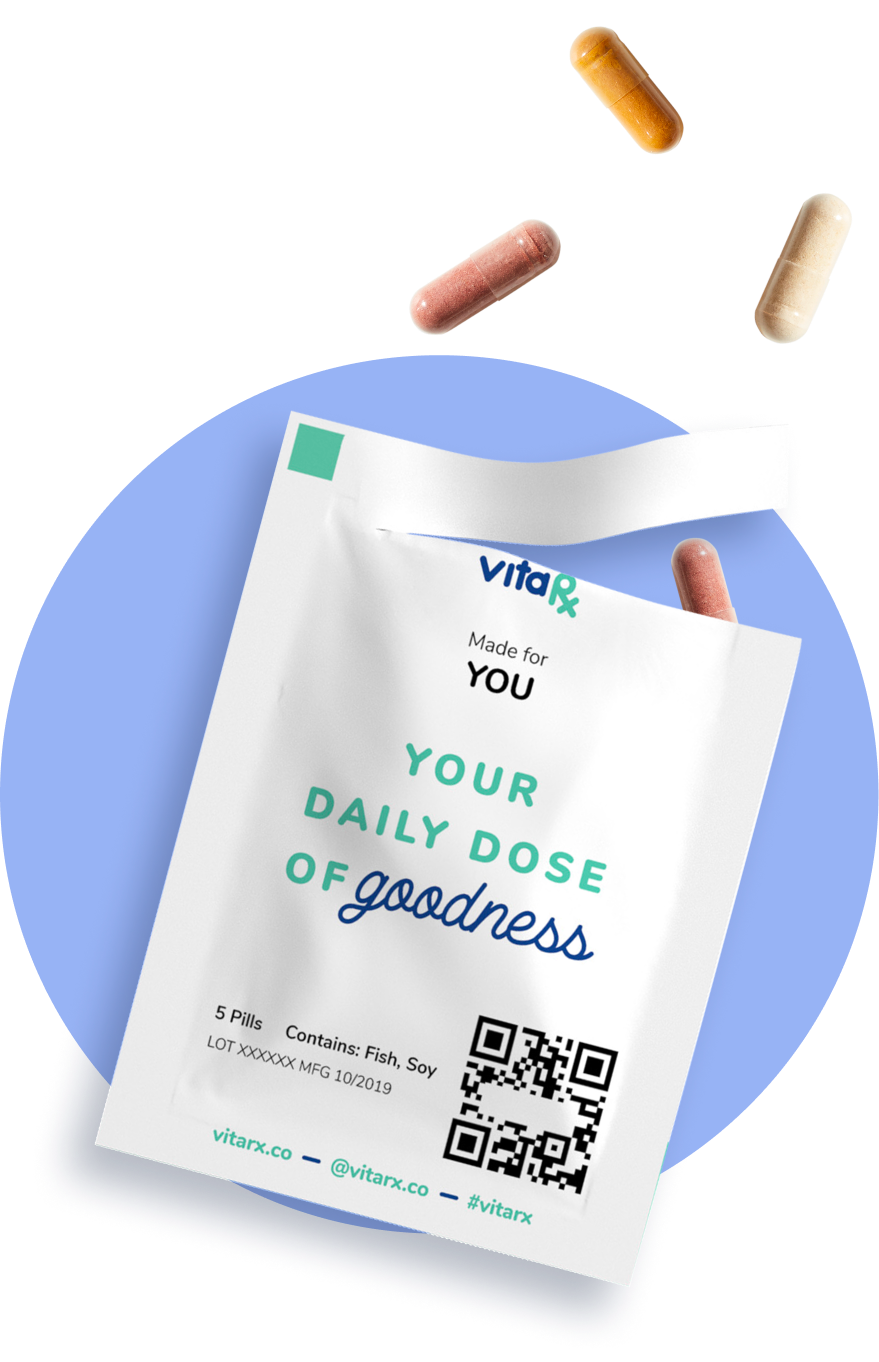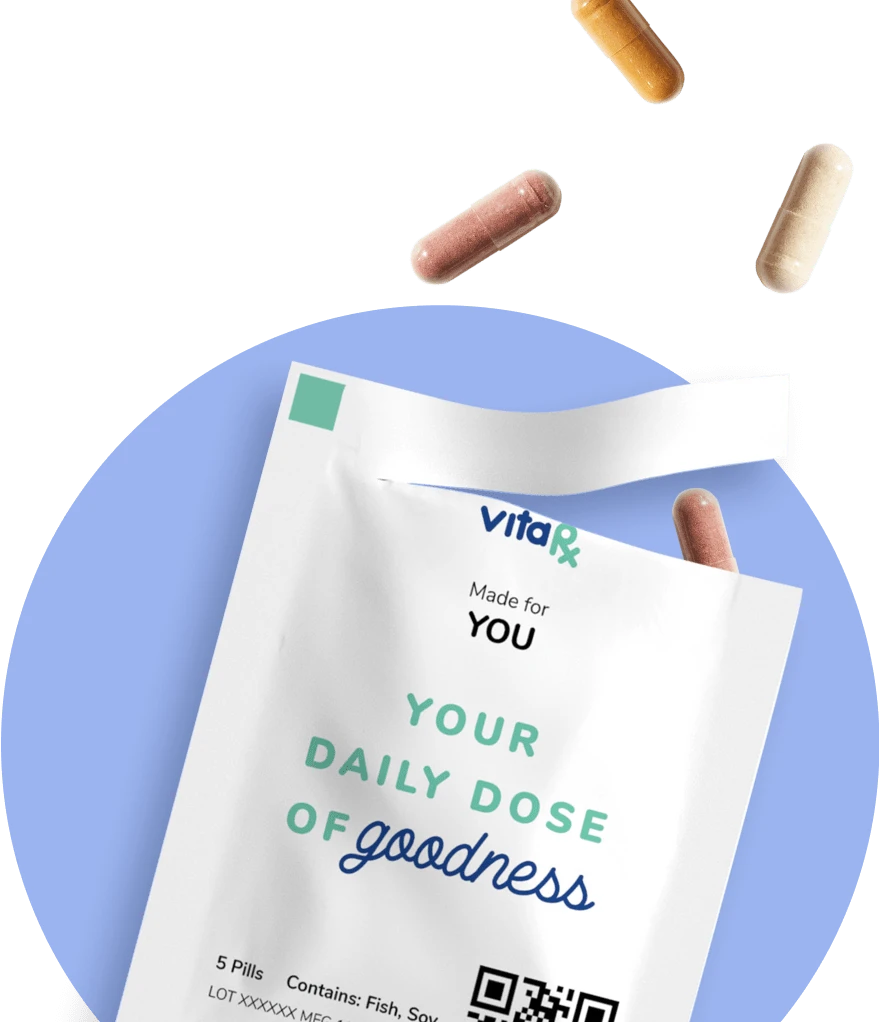Last update: January 23, 2025
7 minute read
Niacin Flush
Ever felt a sudden warmth after taking niacin? Learn why this temporary flush might hold the key to significant health benefits without posing a serious health risk.

By Stephanie Wright, RN, BSN
Edited by Dr. Dimitar Marinov, MD, RDN, PhD

Ever taken a vitamin and suddenly felt your skin warming up, turning a bit red, and wondered what's going on? If you've experienced this, you might have encountered the famous niacin flush. Don't worry—this temporary discomfort may actually be more beneficial than you think. Let's dive into what niacin flush is all about and why it might just change your life.
Key takeaways
- Niacin flush is a common and harmless reaction to high doses of niacin (vitamin B3)
- This flush results from the dilation of blood vessels, increasing blood flow to the skin
- Understanding and managing niacin flush may help you harness niacin's health benefits without the unwanted side effects
What is niacin flush?
Ever heard of niacin flush? It's a common side effect that occurs when you take high doses of niacin, also known as vitamin B3.
Specifically, it's linked to nicotinic acid, one form of niacin. When you take doses of 500 mg or more, you might experience flushed skin, a prickly hot sensation on your face and upper body, itching, tingling, or even a burning feeling. But don't panic—it's usually harmless and temporary.
What causes this flush?
So, what's causing this sudden warmth? It's all about your blood vessels.
Niacin causes your capillary blood vessels to dilate, widening and allowing more blood to flow to the skin's surface. This process is triggered by the release of prostaglandins—compounds in your body that influence blood flow.
The result? That characteristic flushing and warmth. Rest assured, it's not an allergic reaction; it's just your body's physiological response to high doses of niacin.
Symptoms and duration
Curious about what to expect if you experience a niacin flush? Here's what might happen:
- Reddening of the skin, especially on the face and upper body
- Burning or itching sensations
- Feelings of warmth
- Prickly or hot sensations on the skin
These symptoms typically kick in about 15 to 30 minutes after you've taken the supplement and usually fade away within 1 to 2 hours. Not too long to wait it out!
How to prevent and manage niacin flush
Not a fan of the flush? There are ways to minimize or even prevent it:
- Start low and go slow: Begin with a low dose of niacin and gradually increase it over several weeks.
- Take it with food: Consuming niacin with meals may reduce the intensity of the flush.
- Aspirin to the rescue: Taking a low-dose aspirin (about 30 minutes before niacin) may block the prostaglandins responsible for the flush. However, make sure that you do not have any contraindications against taking aspirin or other NSAIDS.
- Watch what you consume: Avoid spicy foods, hot beverages, alcohol, hot showers, or baths right after taking niacin—they may intensify the flushing.
Different types of niacin supplements
Did you know the type of niacin supplement you choose may affect whether you experience flushing? Here's the breakdown:
- Immediate-release niacin tablets: These may cause intense flushing.
- Extended-release niacin products (like Niaspan): These release niacin at a rate that minimizes flushing.
Health benefits and risks
Niacin isn't just known for causing a flush—it has some impressive health benefits, especially when it comes to cholesterol management. Nicotinic acid may:
- Reduce LDL (bad) cholesterol
- Raise HDL (good) cholesterol
- Lower triglyceride levels
But as with anything, there are potential risks:
- Liver damage: High doses (over 500mg) combined with long-term use, regardless of whether it is immediate or extended-release forms, may lead to serious liver problems like hepatitis or liver failure.
- Other side effects: Some people may experience stomach upset, headache, dizziness, blurred vision, or interactions with other medications.
When to seek medical attention
While niacin flush is typically harmless and temporary, there are times when you should consult a healthcare professional:
- Severe or prolonged flushing that doesn't subside after a couple of hours
- Symptoms of liver issues, such as jaundice (yellowing of the skin or eyes), dark urine, or abdominal pain
- Allergic reactions, including hives, difficulty breathing, or swelling of the face, lips, tongue, or throat
If you experience any of these, it's important to seek medical advice promptly.
The role of niacin in overall health
Beyond its cholesterol-lowering effects, niacin plays a crucial role in:
- Energy production: It helps convert carbohydrates into glucose, the body's primary fuel source.
- DNA repair: Niacin is essential for repairing and synthesizing DNA.
- Skin and digestive health: It supports healthy skin and aids in the normal functioning of the digestive system.
- Nervous system: Niacin contributes to the normal functioning of the nervous system.
Ensuring you have adequate niacin intake is important for maintaining overall health. However, most people obtain sufficient niacin through a balanced diet rich in meats, fish, nuts, and grains.
Alternatives to high-dose niacin
If you're considering niacin for cholesterol management but are concerned about the flush or potential side effects, there are other options:
- Prescription medications: Statins and other cholesterol-lowering drugs may be effective alternatives.
- Lifestyle changes: Including a heart-healthy diet, regular exercise, and weight management can significantly impact cholesterol levels.
- Other supplements: Omega-3 fatty acids, soluble fiber, and plant sterols have been shown to support triglyceride and/or cholesterol management.
Always discuss with your healthcare provider to determine the best approach for your individual needs.
VitaRx Tip
Did you know that nearly everyone who takes high doses of nicotinic acid experiences niacin flush? It's not just you—it's a universal reaction!
Niacin flush by the numbers
Here's a quick look at some stats:
- Prevalence: Virtually every person taking high doses of nicotinic acid will experience flushing.
- Dose matters: Flushing commonly occurs with doses of 1,000 mg or more. Other side effects like diarrhea or increased bleeding may happen with doses of 500 mg or more of nicotinamide.
- Cholesterol impact: High doses of niacin may significantly reduce LDL cholesterol and raise HDL cholesterol, though results vary per individual.
Frequently asked questions (FAQ)
Here are some of the most frequently asked questions about niacin flush.
Final thoughts
Niacin flush might catch you off guard the first time it happens, but understanding it demystifies the experience. This temporary discomfort is a sign of how niacin affects your body, and with proper management, you may minimize the flush while reaping the health benefits. Always remember to consult your healthcare provider before starting any new supplement regimen.
— Dr. Dimitar Marinov, MD, RDN, PhDWhile experiencing a niacin flush is a common and temporary side effect, implementing strategies such as gradual dosing can help you safely leverage niacin’s cholesterol-lowering benefits without significant discomfort. However, be wary of potential liver damage related to months of consistent high-dose niacin supplementation.
Sources and references
- Niacin for primary and secondary prevention of cardiovascular events - PMC
- Mechanisms of niacin skin test pathogenesis in patients at clinical high risk for psychosis and schizophrenia
- Niacin, an old drug with a new twist - PMC
- Randomized controlled trial of different aspirin regimens for reduction of niacin-induced flushing | American Journal of Health-System Pharmacy | Oxford Academic
- Niacin for cholesterol: MedlinePlus Medical Encyclopedia
- Niacin – Vitamin B3 – The Nutrition Source
- Role of Nicotinamide in DNA Damage, Mutagenesis, and DNA Repair - PMC
- The Health Benefits of Niacin (Vitamin B3)
- Niacin in the Central Nervous System: An Update of Biological Aspects and Clinical Applications - PMC
Author

Stephanie Wright
Stephanie brings over 13 years of diverse nursing experience to the table, having honed her expertise in critical care, mental health, and utilization management. Her journey as a registered nurse across these various healthcare sectors underscores her adaptability and deep commitment to patient care.
Fact checker

Dr. Dimitar Marinov
Dr. Marinov has years of experience in scientific research and preventive and clinical medicine. His publications in peer-reviewed journals are on nutritional status, physical activity, and musculoskeletal disorders among adolescents.
At VitaRx, we're not just passionate about our work — we take immense pride in it. Our dedicated team of writers diligently follows strict editorial standards, ensuring that every piece of content we publish is accurate, current, and highly valuable. We don't just strive for quality; we aim for excellence.
Related posts
While you're at it, here are some other relevant articles you might be interested in.

Get your personalized vitamin recommendations in less than
5 minutes.
Get your personalized vitamin recommendations in less than
5 minutes.




